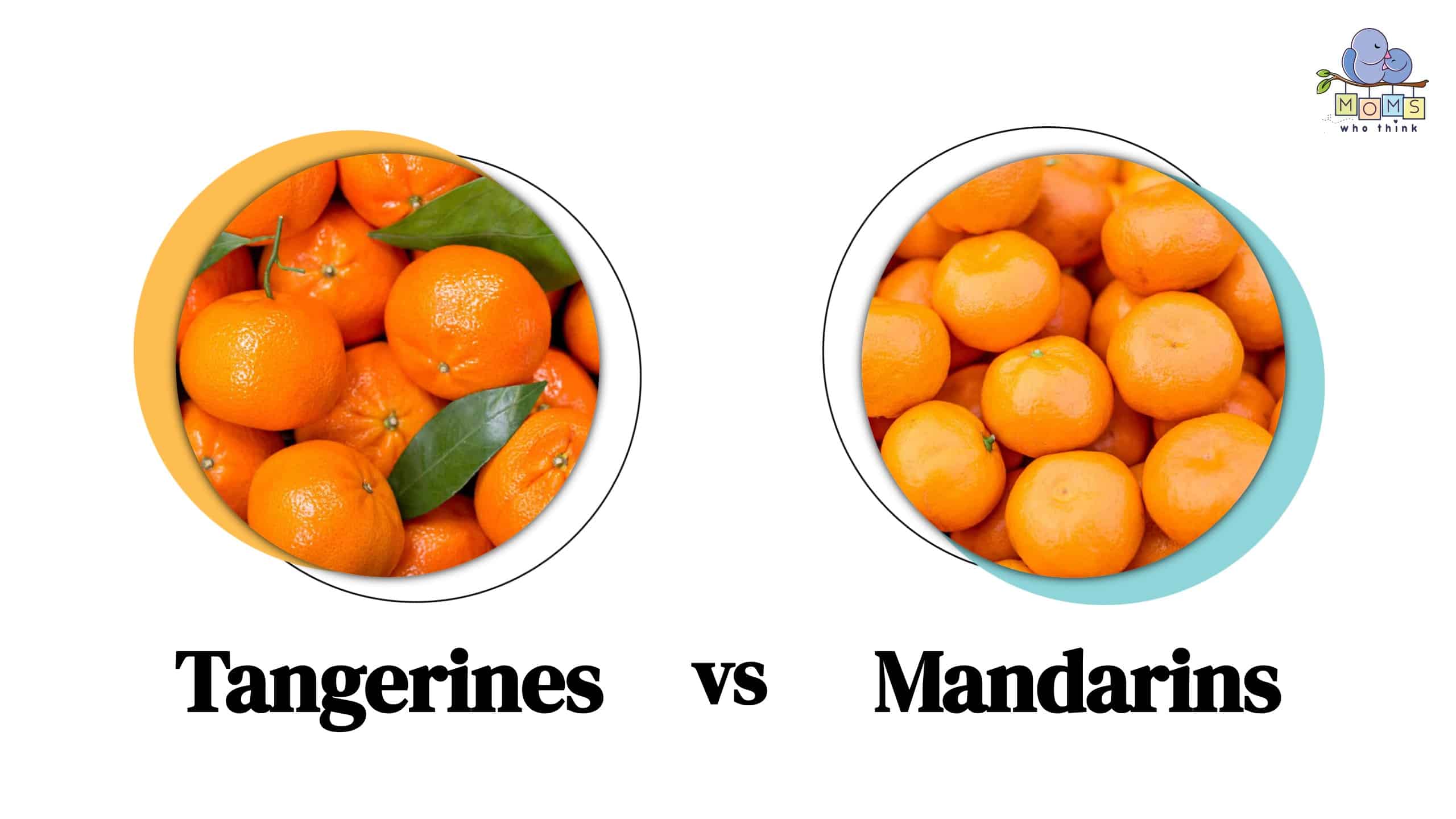Ever bite into a citrus fruit and wonder whether you’re eating a tangerine or mandarin? Both come from the orange family, but is there really a difference between the two? And if so, how can you tell? After all, they look similar. But guess what? They aren’t the same.
In fact, when it comes to tangerines vs. mandarins, there are unique differences that make them stand out and may even surprise you! On top of that, there’s a boatload of health benefits you get in every bite! Kids and adults alike love ‘em! That’s why it makes sense that they’re one of America’s favorite healthy snacks! So, let’s get into the sweet showdown of tangerines vs. mandarins. And see if you can decide which is the winner for your palate!
The Origin of Tangerines and Mandarins
Regarded as a symbol of good fortune, mandarins trace back to southern Asia and the Philippines. It wasn’t introduced to the United States until the turn of the 19th century.
On the other hand, tangerines are a hybrid of mandarins. This citrus fruit traveled through the Silk Road trade route and was sent to other parts of the world from Asia. Once it came to the Moroccan seaport of Tangiers, it was named Tangerine.
In Asian culture, both tangerines and mandarins symbolize happiness and prosperity. That may explain why so many parents give their baby girls a name from the orange family!
Size, Shape, and Taste
Let's Start With Mandarins
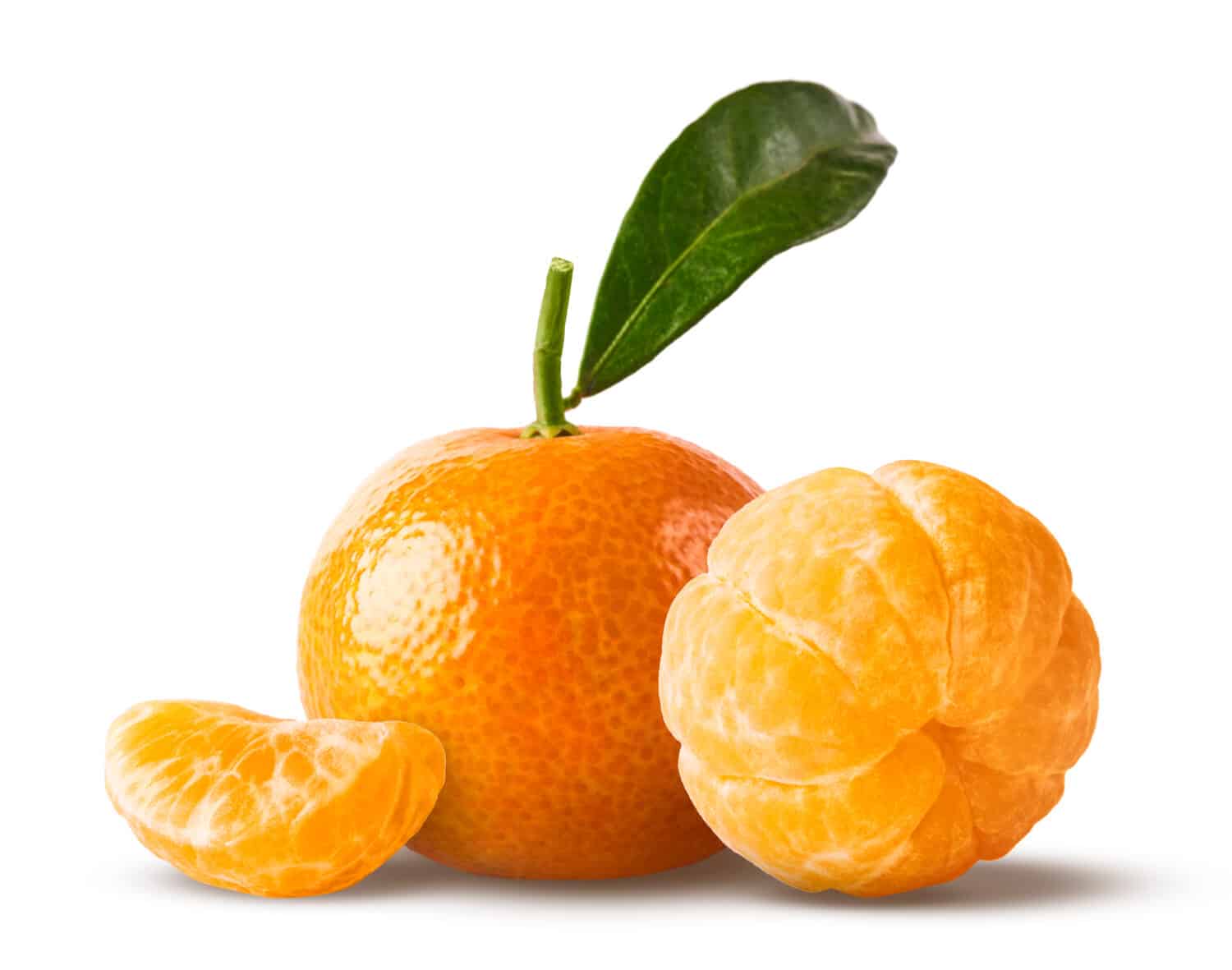
Fresh ripe mandarins are deliciously sweet!
©Agave Studio/Shutterstock.com
Mandarins have a flat top and bottom and a wide body. They are about 1.5 to 3 inches in size. And they are grown in tropical and subtropical areas. However, they don’t do well in cold temperatures. As far as whether they contain seeds, the majority do. And because the skin is thin and loose, it makes it easier to peel. And the taste is oh so sweet! In fact…
Have you heard of Cuties®? They consist of two types of mandarins. Depending on the time of year, you could be eating a clementine mandarin. Those are available in the fall/winter. On the other hand, you have the W. Murcott mandarins, which are available in late winter/early spring.
What about Tangerines?
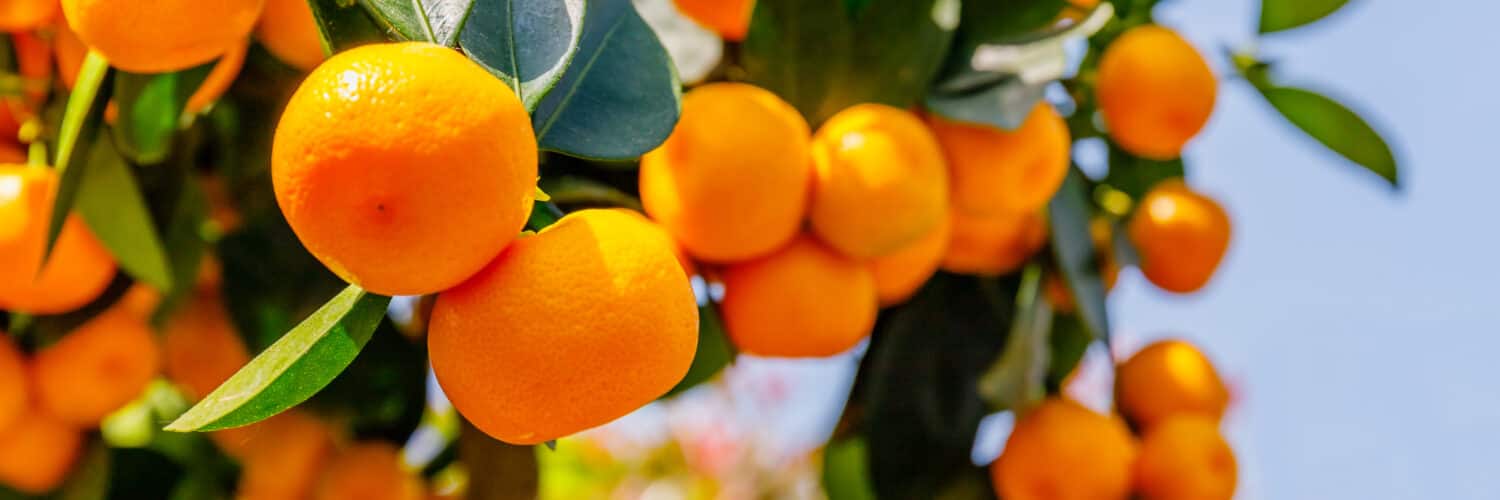
Tangerines have a tart taste to them.
©nnattalli/Shutterstock.com
Tangerines are smaller than Mandarin and not as round as other citrus fruits. But don’t let its size fool you. It may be smaller but definitely has a stronger taste. They’re tarter than they are sweet. And when ripe and ready to eat, you’ll find the uneven ‘pebbly’ and thick texture to be firm to slightly soft with a deep, bright orange color. Some people like to eat the skin. However, there is not enough scientific evidence to substantially prove the health benefits.
Another thing to note is that they are practically seedless citrus fruit. So you don’t have to worry about what to do with all those seeds, because you won’t have much, if any, at all!
They are mainly grown in the southern region of the United States from November to January.
Both tangerines and mandarins are popular in:
- Snacking
- Desserts
- Fruit juices
- Fruit salads
- Green salads
- Salad dressings
- Smoothies
- Jellies and jams
- Yogurt
- Asian cooking
Bottom line: Both are perfect to use for snacking or savory dishes. What does your palette prefer? If it’s the sweeter side, then mandarins are the way to go! If you prefer a tarty taste, then tangerines are the right choice!
Nutrition Facts
Tangerines vs. mandarins – which is better for your health? Well, both have similar nutritional profiles. Why? Because they are both a part of the Citrus reticulata species. In other words, they both come from small orange-producing trees.
Did you know that tangerines and mandarins comprise about 85% water? This explains why they help to quench your thirst when you bite into one and are a refreshing addition on a hot day! Also, they are great sources of vitamin C! But it doesn’t just stop there. Let’s see what else these citrus delights offer and see if you can pick out the one minor difference between the two!
Tangerine Nutrition Breakdown:
Below are the approximate values per 100 grams of a medium-sized tangerine
– Calories: 53 kcal
– Carbohydrates: 13.3 grams
– Sugars: 9.2 grams
– Dietary Fiber: 1.8 grams
– Protein: 0.8 grams
– Fat: 0.3 grams
– Vitamin C: 26.7 mg (approximately 45% of the Daily Value)
– Vitamin A: 681 IU (approximately 14% of the Daily Value)
– Folate (Vitamin B9): 16 mcg (approximately 4% of the Daily Value)
– Potassium: 166 mg (approximately 4% of the Daily Value)
– Calcium: 37 mg (approximately 4% of the Daily Value)
– Magnesium: 12 mg (approximately 3% of the Daily Value)
Mandarin Nutrition Breakdown
Below are the approximate values per 100 grams of a medium-sized mandarin
– Calories: 53 kcal
– Carbohydrates: 13.3 grams
– Sugars: 10.6 grams
– Dietary Fiber: 1.8 grams
– Protein: 0.8 grams
– Fat: 0.3 grams
– Vitamin C: 26.7 mg (approximately 45% of the Daily Value)
– Vitamin A: 681 IU (approximately 14% of the Daily Value)
– Folate (Vitamin B9): 16 mcg (approximately 4% of the Daily Value)
– Potassium: 166 mg (approximately 4% of the Daily Value)
– Calcium: 37 mg (approximately 4% of the Daily Value)
– Magnesium: 12 mg (approximately 3% of the Daily Value)
Did you notice that mandarins have a slightly higher sugar content? It’s no wonder that mandarins are sweeter than tangerines, as mentioned earlier. But now that you see the nutritional information, what does this all mean? Let’s break it down.

Tangerines and mandarins are chock-full of vitamin C!
©Rawpixel.com/Shutterstock.com
Both tangerines and mandarins help:
- Support your immune system by fighting off nasty colds and germs
- Absorb iron and increase energy
- Support brain health
- Stabilize blood pressure
- Promote healthy skin
- Fight cell damage
- Douse inflammation
- Support healthy digestion
In fact, one five-year study quoted in WebMD showed over 500,000 adults who ate a least a half cup of fresh fruit daily were roughly a whopping 33% less likely to die from a heart disaster!
On top of that, since both tangerines and mandarins are a great source of dietary fiber, they help to aid in weight loss! How? Because fiber helps reduce your appetite by keeping you full for longer periods of time. So, for example, if you have a tangerine or mandarin in the morning, you won’t easily feel the need to reach for unhealthy snacks just to get you through the day!
Bottom line: Both tangerine and mandarin can hold their own weight when it comes to nutrition. Why? Because both are jam-packed with health-boosting nutrients from A-Z! You can’t go wrong with either! So whether you’re looking for something a little tart or sweet, both tangerines and mandarins are a healthier alternative for overall well-being.
Tasty Recipes With Oranges
There are all kinds of creative ways you can infuse tangerines or mandarins into your diet. Here are some favorites from Moms Who Think:
Print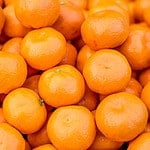
Sesame Orange Pork Chops
Ingredients
3 pounds pork chops
2 cups orange juice
1 Tablespoon brown sugar
2 cans mandarin oranges drained, (11 ounces each)
1 can pineapple tidbits drained, (8 ounces)
1 Tablespoon sesame seeds
Instructions
1. Place pork chops into the crock pot. In a small bowl, mix the brown sugar with the orange juice until well combined. Pour orange juice mixture evenly over chops.
2. Cook on low 6 to 8 hours.
3. About 30 minutes before serving add the oranges and pineapple, warm for 20 minutes.
4. Sprinkle sesame seeds evenly over each pork chop. Serve with rice or broccoli.
And the Winner Is…
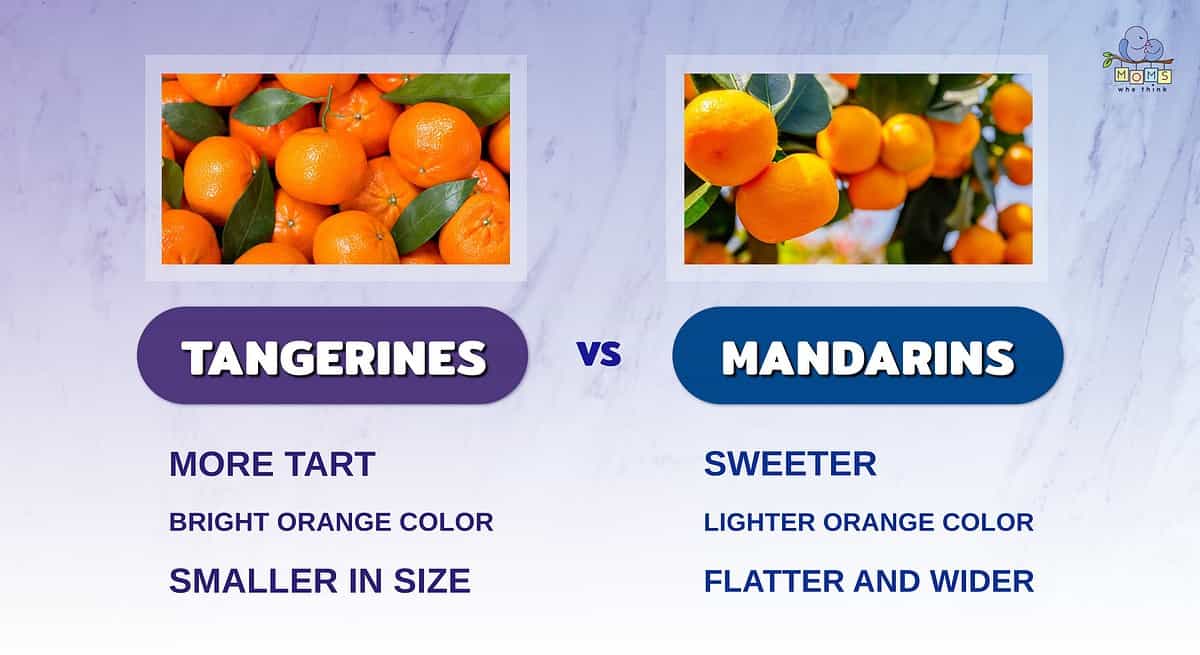
While tangerines and mandarins are very similar, there are subtle differences. Let's take a look at a few:
- Tangerines are a brighter color and are typically smaller, whereas mandarins are a lighter orange and wider.
- With its much sweeter taste, mandarins are particularly popular, while tangerines have a more tart flavor.
- The majority of mandarins contain seeds, whereas tangerines are practically seedless.
All in all, your palate is the judge! And since we've cleared up the citrus confusion, you can confidently make your choice over tangerines vs. mandarins. That means, if your palate prefers a sweeter flavor with a little intensity, then tangerines are your go-to pick. On the other hand, if your taste buds crave a mild and smooth citrus experience with the added bonus of year-round availability, then mandarins are the ones that will win you over!
Whichever fruit you choose, both tangerines and mandarins are nutritional powerhouses, loaded with vitamin C, dietary fiber, and other essential nutrients for optimal health. So, let the sweet showdown begin and treat you and your family's palate to a delightful citrus experience with tangerines or mandarins. Happy snacking!
